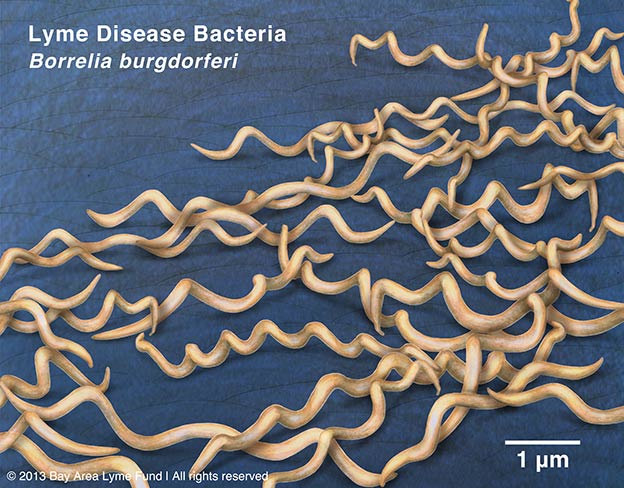Lyme disease is caused by a number of different strains and species of Borrelia bacteria, generally Borrelia burgdorferi in the United States and Borrelia afzelii and Borrelia garinii in Europe.
The Borrelia burgdorferi bacteria are named after scientist Willy Burgdorfer, who first identified the strain in the early 1980s.
Unique Properties
The bacteria, known as spirochetes for their unique corkscrew shape and twisting propulsion, are slow to replicate and one of few bacteria that have learned to survive without iron, instead relying on a supply of manganese for their survival (lending to potential treatment strategies intending to starve the bacteria of manganese).
 1
1
Unlike most disease-causing bacteria, Borrelia burgdorferi do not appear to emit a toxin. Instead, the bacteria seems to have a direct interaction with the cell tissues it infects. Also interesting is the bacteria’s slow replication rate, meaning that the number of bacteria found in a host remains quite small even after active infection.
Borrelia in the Body
Borrelia bacteria are transmitted to humans through the bite of a tick (see What Causes Lyme Disease for more information). When the tick begins to feed on a human (or another animal host), the spirochetes replicate in the midgut, migrate into the salivary glands of the tick, and then are released into the bloodstream of the host.
Depending on the strain of Borrelia, the bacteria will be more or less likely to spread through the bloodstream to distant sites in the body (Wormser, Brisson, Liveris et. al., 2008). When it does spread, it can cause arthritic, neurological, cardiovascular and other symptoms.
Animal studies have shown that Borrelia burgdorferi can be found in many tissues and organs including the skin, joints, heart, brain, bladder and other sites of untreated animals as well as in animals who receive antibiotic treatment (Barthold, 2012, and Embers, Barthold, Borda et. al., 2012).
The bacteria tends to be found in low numbers in tissues. Aside from the initial infection, Borrelia does not appear to circulate in the blood which is why it is so difficult to detect.
Image courtesy of Emily M. Eng